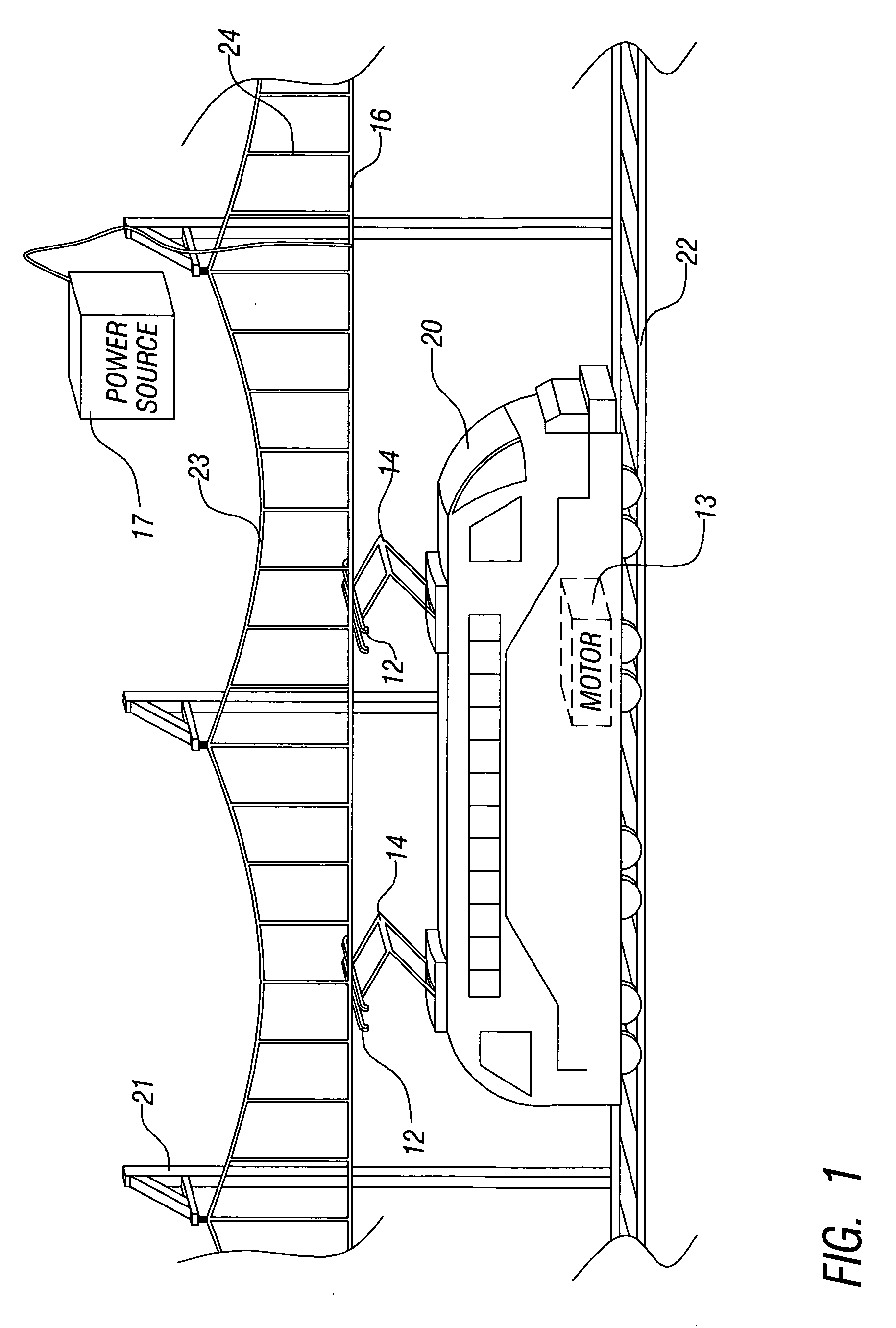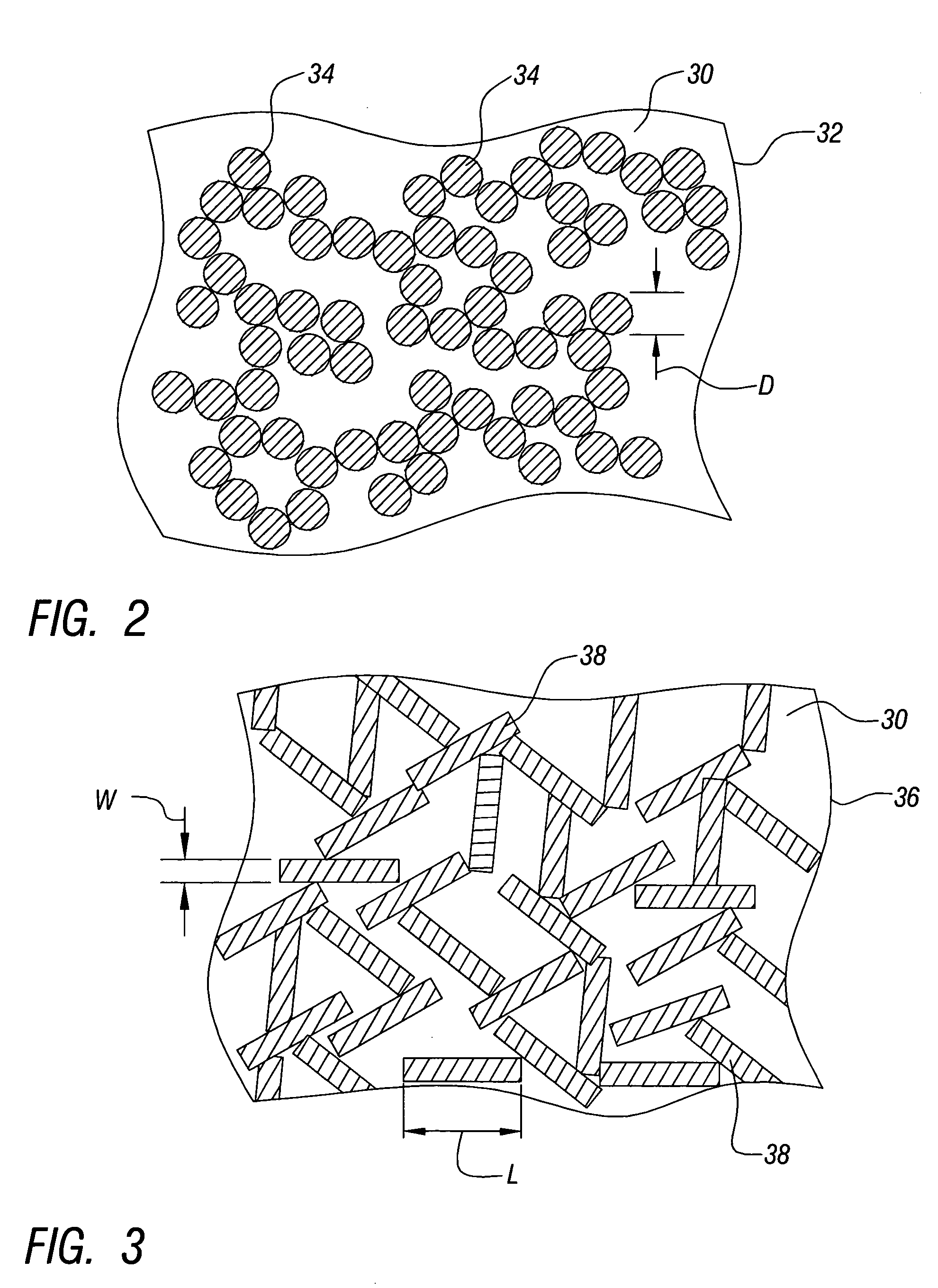Low cost electrical power connectivity for railway systems manufactured from conductive loaded resin-based materials
a technology of conductive resin and low cost, applied in the field of railway systems, can solve the problems of increasing electrical resistance, power loss, maintenance costs, and metal wires, and achieve the effect of effective electrical power connectivity
- Summary
- Abstract
- Description
- Claims
- Application Information
AI Technical Summary
Problems solved by technology
Method used
Image
Examples
embodiment 250
[0063] Referring now to FIG. 12, a seventh preferred embodiment of the present invention is illustrated. An embodiment 250 of a catenary contact wire 254 and dropper wire 258 coupling is illustrated in cross section. As described above, the contact wire 254 is used to conduct the operating current for an overhead power system as shown in FIG. 1. The dropper wire 258 is used to connect the contact wire 254 to the catenary structure. Referring again to FIG. 12, the dropper wire 258 is connected to the contact wire 254, according to this embodiment, by a connecting clamp 262. According to this embodiment, any, or all, of the contact wire 254, the dropper wire 258, and the clamp 262 comprise the conductive loaded resin-based material of the present invention.
[0064] Referring again to FIG. 1, by forming various electrical contacting structures, such as the pantograph 12 and 14 and the catenary system 23, 24, and 16, from the conductive loaded resin-based material of the present invention...
embodiment 200
[0069] Referring now to FIG. 11, an embodiment 200 of a fourth rail power system is illustrated. In a 4th rail system, positive and negative connections are provided for the power supply. By comparison, in the third rail system shown in FIGS. 9 and 10, the running rails 142 are used as ground return lines for the electrical current, whether DC or AC. Referring again to FIG. 11, two power rails 210 and 214 are provided along with the running rails 206 and sleepers 204. The power rails 210 and 214 allow for positive and negative DC terminals, such as +300 Volts and −300 Volts, to be used in the power system. In addition, the running rails 206 are not used as ground returns thus improving performance. The electrical rails 210 and 214 are again separated from the sleeper 204 by insulators 208. Separate shoes 212 and 216 are used to couple each rail 210 and 216 to the train. FIGS. 9 through 11 illustrate 3rd and 4th rail systems where the shoe contacts the rail on the top rail surface. T...
PUM
| Property | Measurement | Unit |
|---|---|---|
| diameters | aaaaa | aaaaa |
| diameters | aaaaa | aaaaa |
| diameters | aaaaa | aaaaa |
Abstract
Description
Claims
Application Information
 Login to View More
Login to View More - R&D
- Intellectual Property
- Life Sciences
- Materials
- Tech Scout
- Unparalleled Data Quality
- Higher Quality Content
- 60% Fewer Hallucinations
Browse by: Latest US Patents, China's latest patents, Technical Efficacy Thesaurus, Application Domain, Technology Topic, Popular Technical Reports.
© 2025 PatSnap. All rights reserved.Legal|Privacy policy|Modern Slavery Act Transparency Statement|Sitemap|About US| Contact US: help@patsnap.com



